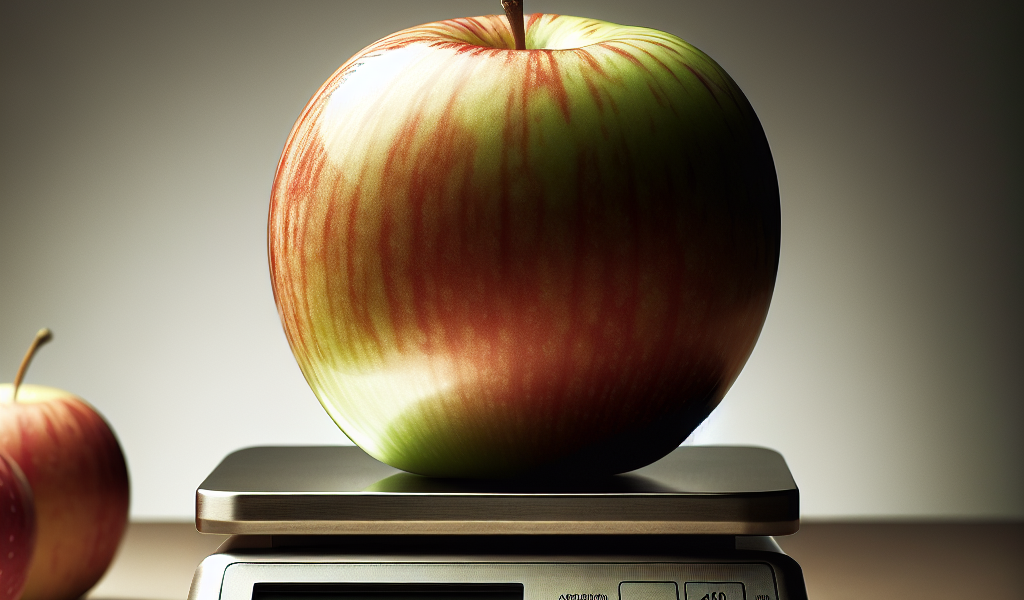How Many Calories Are In An Apple?
Navigating the labyrinth of dietary information can often be overwhelming – a relentless tide of questions swirls around the concept of caloric intake, from how many calories your body requires each day, to the specific calorie content of a wide range of foods like apples, avocados, or even chicken breast. This article aims to shed light on these burning questions, while also offering tangible guidance on topics as diverse as weight loss strategies, deciphering the energy content within different food items, to understanding your daily caloric requirements and expenditure. We endeavor to unmask the enigma of calories, paving the way for a more informed and health-conscious approach to your eating habits.

Understanding Calories
Definition of calories
Calories are a unit of energy. In dietary terms, they refer to the amount of energy food will provide the body when eaten.
How the body uses calories
Your body uses calories as energy to perform all its functions, from movement to breathing and even thinking. When you eat, your body converts the nutrients in the food into fuel, measured in calories.
The importance of knowing caloric content of foods
Knowing the caloric content of foods is important for maintaining a balanced diet. It can help you understand how much you’re eating in relation to how much you’re burning, allowing you to make informed choices about portion sizes and the types of food you consume.
Determining Your Daily Caloric Needs
Factors affecting daily caloric needs
Your daily caloric needs are affected by your age, sex, weight, height, and physical activity level. The more active you are, the more calories you need.
Tools and methods for estimating caloric needs
Various tools and methods can help you estimate your daily caloric needs. These include online calculators that factor in your activity level, age, sex, weight, and height.
The role of physical activity in caloric needs
Physical activity plays a crucial role in determining your caloric needs. The more active you are, the more calories your body burns.

Caloric Content of Common Foods
Calories in fruits like bananas and apples
Fruits like bananas and apples are relatively low in calories. A medium-sized banana contains around 105 calories, while a medium-sized apple contains about 95 calories.
Calories in vegetables like avocados and cucumbers
Calorie content in vegetables varies. Among the more calorie-dense vegetables is the avocado, with about 230 calories in one medium avocado. A cucumber, on the other hand, is lower in calories, with about 45 calories in a whole cucumber.
Calories in proteins like chicken breasts and eggs
In terms of protein, a skinless chicken breast has about 165 calories, whereas one large egg has roughly 70 calories.
Caloric Content of an Apple
The average number of calories in an apple
The average number of calories in an apple depends on its size and variety, with a typical medium-sized apple containing around 95 calories.
Variations in caloric content based on size and variety of an apple
The caloric content of an apple can vary. Larger apples and those of certain varieties are denser in calories.
Comparing caloric content to other common fruits and foods
When compared to other common fruits and foods, apples are fairly low in calories. For instance, one medium banana has around 105 calories, while a medium orange has approximately 80.

Incorporating Apples into a Healthy Diet
Benefits of apples beyond low calorie count
Despite their low calorie count, apples are rich in fiber, antioxidants, and a variety of vitamins and minerals that are good for your health. They may also contribute to weight loss and reduced risk of chronic diseases.
Ways to include apples in meals and snacks
There are many ways to incorporate apples into meals and snacks. They can be eaten on their own, sliced into salads, cooked into dishes or baked goods, or blended into smoothies.
Considerations for apple-related products (juice, sauces, etc.)
When it comes to apple-related products, be mindful of the added sugars. Apple juice and applesauce, for example, often contain added sugars which increase their calorie content.
Losing Weight Through Caloric Deficit
Understanding the concept of ‘calories in, calories out’
The concept of “calories in, calories out” refers to balancing the number of calories you consume with the number you burn. To lose weight, you need to create a calorie deficit by consuming fewer calories than you burn.
How many calories to cut for weight loss
Depending on your weight loss goals, it’s often suggested to cut about 500 to 1,000 calories per day from your diet. This can result in a loss of around 1 to 2 pounds per week, which is a safe and sustainable weight loss rate.
Safe and sustainable weight loss strategies
Safe and sustainable weight loss strategies include eating a balanced, nutrient-rich diet, regular physical activity, and gradual, steady weight loss. It’s also important to maintain a positive relationship with food and exercise.

Estimating Daily Caloric Burn
Tools for estimating caloric burn
There are various tools to help you estimate your daily caloric burn, including heart rate monitors, fitness trackers, and online calculators.
The impact of different types of exercise on caloric burn
Different types of exercise have different impacts on caloric burn. For instance, high-intensity interval training (HIIT) workouts often burn more calories than traditional cardio.
How lifestyle and metabolism affect caloric burn
Your lifestyle and metabolism can greatly affect your caloric burn. For instance, someone with a sedentary lifestyle will burn fewer calories than someone who’s active.
Understanding Caloric Content on Food Labels
How to read and understand food labels
When reading food labels, note the serving size, total calories, and the breakdown of macronutrients. It will provide crucial information about the nutritional value of the food.
The relevance of portion sizes on caloric content
Portion sizes are relevant to caloric content because they represent the amount of food that the nutritional information is based upon. Therefore, eating larger portions means consuming more calories.
How macronutrient distribution affects caloric content
Macronutrient distribution—how many grams of protein, fat, and carbohydrates a food contains—directly impacts the caloric content. Each gram of protein and carbohydrate has 4 calories, while each gram of fat has 9 calories.

Caloric Considerations for Special Diets
Calories in vegetarian and vegan diets
While the exact calorie count will vary, a vegetarian or vegan diet can often be lower in calories than a diet that includes meat, particularly when based around fruits, vegetables, whole grains, and legumes.
Calorie counting in low-carb and ketogenic diets
In low-carb and ketogenic diets, calorie counting is often secondary to limiting carbohydrate intake. However, calories still count, especially if weight loss is a goal.
Caloric intake in high-protein diets
Caloric intake in high-protein diets may be higher since protein-dense foods can be higher in calories. However, such diets can also be filling, which can aid in weight loss.
Dispelling Myths About Calories and Weight Loss
The fallacy of ‘negative calorie’ foods
The concept of ‘negative calorie’ foods is a myth. While some foods are low in calories, the body still uses fewer calories to process them than they actually contain.
Why all calories aren’t created equal
Not all calories are created equal due to varying nutritional value. For instance, 200 calories from a doughnut are not the same as 200 calories from a bowl of fresh fruits, as the nutritional benefits vary.
Common misconceptions about calories and fat loss
One common misconception is that eating too few calories will lead to optimal fat loss. In truth, too few calories can lead to nutrient deficiencies and slower metabolism.

